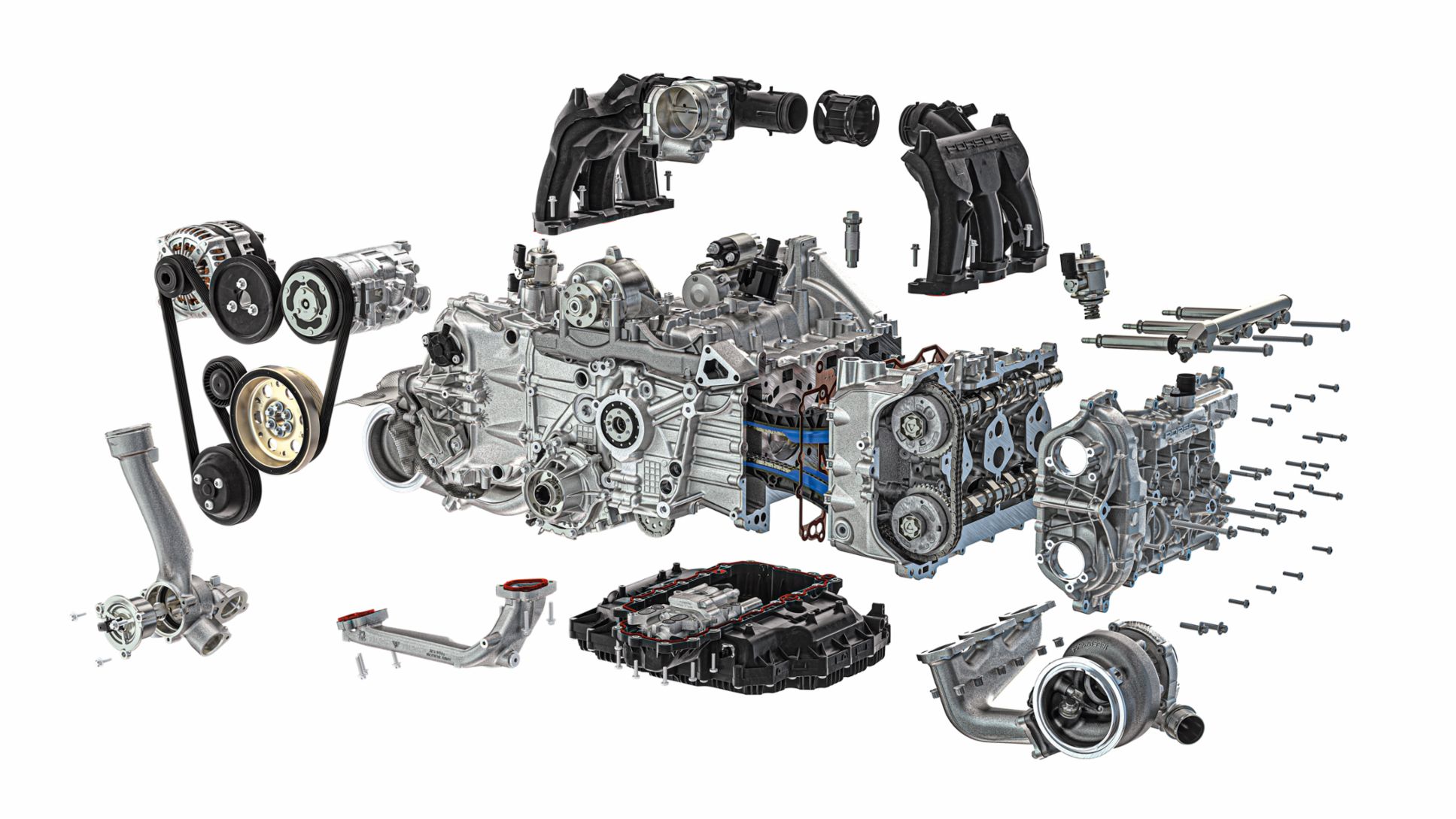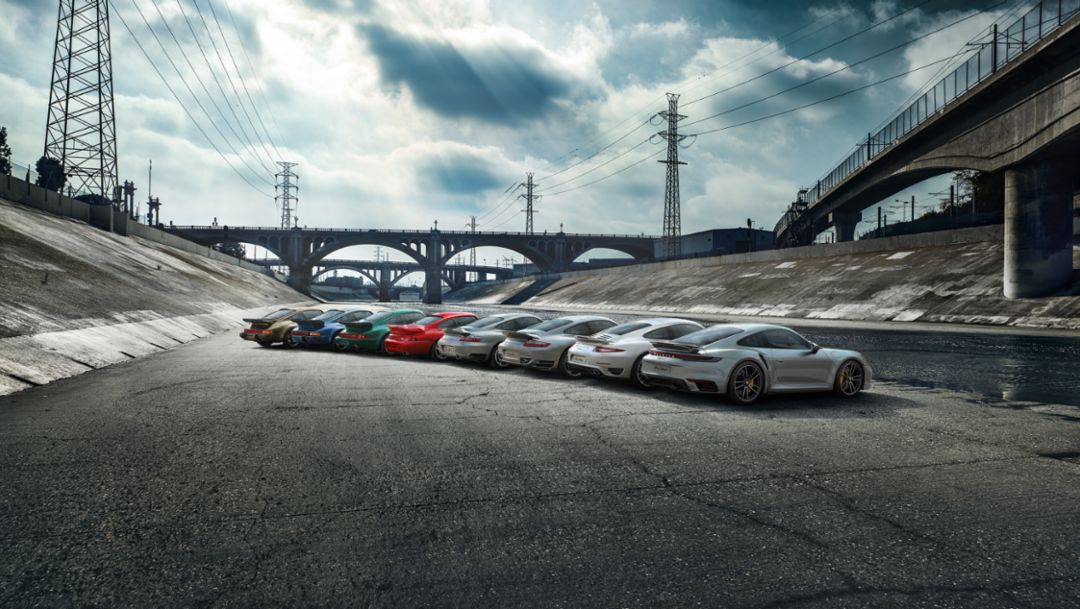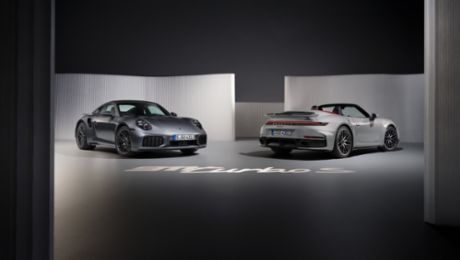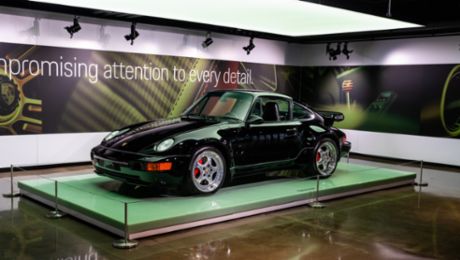The genetic codes of all of Porsche’s current boxer engines are 9A2 and 9A2 evo for four- and six-cylinder engines. They represent a flexible system of identical, technically similar, and individual components that together form a proven foundation, yet also create the space for a plethora of different character traits. A glance at the range of options amply demonstrates the point: four or six cylinders, naturally aspirated engine or turbo, between two and four liters of displacement, from 300 to 640 hp and torque between 280 to 590 lb ft.
One thing that all members of the boxer family have in common is their cylinder spacing: invariably 118 millimeters. Within the cylinders, pistons with diameters of 91 and 102 millimeters do their duty. More precisely: either 76.4 millimeters up and down or 81.5, depending on the crankshaft. Together with the number of cylinders, this results in five different displacements in the 718 and 911 model lines. With a pool of identical parts that are used without modification in all model lines, as well as components with similar design principles, the result is a wealth of synergies in the fundamental engine design toolbox. This enables developers to concentrate on the individual character of the engine’s periphery—for instance, the intake duct and exhaust system. The result is typical Porsche: because all boxer engines bear the same genes and despite their different characters, they’re all equally efficient, emotional, and driven to perform.
Performance
The new turbo engine delivers astonishing power. The key: enhanced turbochargers with variable turbine geometry (VTG) and wastegates as well as the redesigned, more efficient conveyance of process and charge air.
Efficiency
The optimization of internal friction in the engine and a redeveloped combustion process with centrally positioned piezo injectors enable both greater power and improved efficiency.
Emotion
Whether four cylinders or six, a naturally aspirated engine or turbo: what all Porsche boxer engines have in common is the characteristic sound, the high revving capacity, exceptional responsiveness, and a low center of gravity for maximum driving pleasure.
Info
Text first published in the Porsche customer magazine Christophorus, No. 394. Adapted for PCNA model offering.
Text by Thorsten Elbrigmann
Illustration by design hoch drei





